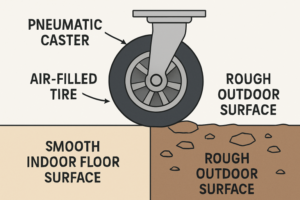A baby’s skin is one of the most delicate and sensitive things in the world. It is soft, smooth, and pure, yet easily affected by moisture, friction, and irritation. Among the most common skin issues infants experience is diaper rash, a condition that causes redness, soreness, and discomfort in the diaper area. For parents and caregivers, finding the right diaper rash cream is an essential step toward keeping a baby’s skin healthy, protected, and happy. This comprehensive article explains everything you need to know about diaper rash creams—how they work, what ingredients they contain, how to use them effectively, and how to choose the best one for your baby’s needs.
1. Understanding Diaper Rash
Before discussing diaper rash creams, it is essential to understand what diaper rash is and why it occurs. Diaper rash, also known as diaper dermatitis, refers to inflammation of the skin in the diaper-covered area, usually the buttocks, thighs, and genitals. It appears as red, irritated patches that may feel warm or bumpy to the touch.
Several factors can cause or worsen diaper rash:
- Prolonged exposure to moisture: Wet diapers trap urine and stool against the skin, breaking down its natural barrier.
- Friction: Constant rubbing of the diaper against the skin can irritate and weaken it.
- Chemical irritation: Fragrances, detergents, or wipes with alcohol can aggravate sensitive skin.
- Yeast and bacteria growth: Warm, moist environments are perfect for microorganisms that worsen the rash.
- Allergic reactions: Some babies react to diaper materials or certain creams.
While diaper rash is generally mild, it can cause great discomfort for a baby. Severe or persistent rashes may require medical attention, but most cases respond well to proper hygiene and a good diaper rash cream.
2. What Is Diaper Rash Cream?
A diaper rash cream is a topical ointment, paste, or lotion applied to a baby’s diaper area to prevent and treat skin irritation. It serves as a protective barrier between the skin and potential irritants such as moisture, urine, and feces.
These creams typically include soothing, healing, and protective ingredients such as zinc oxide, petroleum jelly, or natural oils. They help by:
- Forming a moisture-resistant layer over the skin.
- Reducing inflammation and redness.
- Promoting healing of damaged skin.
- Preventing infection by blocking bacteria and yeast.
Diaper rash creams are not only for treatment but also play a preventive role when applied regularly during diaper changes.
3. Key Ingredients in Diaper Rash Creams
Every diaper rash cream contains a combination of active and inactive ingredients, each serving a unique purpose. The following table outlines the most common ones and their benefits.
| Ingredient | Function | Benefit for Baby’s Skin |
|---|---|---|
| Zinc Oxide | Active skin protectant | Forms a barrier against moisture, reduces redness |
| Petrolatum (Petroleum Jelly) | Moisture barrier | Locks in moisture and prevents chafing |
| Lanolin | Emollient | Softens skin and aids in healing |
| Aloe Vera | Natural anti-inflammatory | Soothes irritation and cools the skin |
| Calendula Extract | Herbal healing agent | Reduces inflammation and promotes regeneration |
| Coconut Oil | Natural moisturizer | Hydrates and prevents microbial growth |
| Shea Butter | Fatty acid-rich emollient | Deeply nourishes and restores skin elasticity |
| Beeswax | Protective coating | Shields skin from irritants and locks in moisture |
| Dimethicone | Skin conditioner | Smooths and protects the surface of the skin |
| Vitamin E | Antioxidant | Helps repair damaged skin and improve resilience |
The best diaper rash creams combine several of these ingredients to balance protection, healing, and comfort.
4. How Diaper Rash Cream Works
The effectiveness of a diaper rash cream lies in its barrier and healing mechanisms. The cream creates a physical shield that prevents irritants from reaching the skin. For example, zinc oxide and petrolatum form a waterproof layer that keeps urine and stool from coming into direct contact with the skin surface.
Meanwhile, the soothing ingredients such as aloe vera, shea butter, and lanolin help the skin recover by moisturizing and reducing inflammation. Antimicrobial components further prevent the growth of yeast and bacteria. Essentially, a diaper rash cream acts as a multi-functional defense system—protecting, soothing, and repairing simultaneously.
5. Types of Diaper Rash Creams
There are several types of diaper rash creams available, each designed to meet specific needs. Understanding these types helps parents choose the most suitable one.
a. Barrier Creams
These are the most common type and primarily prevent diaper rash. They contain high concentrations of zinc oxide or petrolatum. Examples include thick, white pastes that stay on the skin for long durations.
b. Healing Creams
These creams contain natural oils, herbal extracts, or mild medicated agents that actively promote healing of inflamed skin. They are ideal when a rash has already developed.
c. Antifungal Creams
If the rash is caused by yeast (commonly Candida albicans), antifungal creams are prescribed by doctors. They contain agents like clotrimazole or nystatin.
d. Hypoallergenic Creams
Specially formulated for babies with extremely sensitive skin or allergies, these creams avoid fragrances, dyes, and harsh chemicals.
e. Organic and Natural Creams
Made from plant-based ingredients, organic creams use coconut oil, calendula, shea butter, and beeswax. They appeal to parents who prefer chemical-free skincare solutions.
6. How to Apply Diaper Rash Cream Properly
Correct application is just as important as choosing the right cream. Here’s the recommended step-by-step routine:
- Clean the area gently: Use warm water or fragrance-free wipes to remove any residue. Pat dry—do not rub.
- Allow the skin to air out: Let the baby’s bottom stay exposed to air for a few minutes to ensure dryness.
- Apply a thin layer of cream: Use clean hands to spread a protective layer of diaper rash cream over the affected area. Do not rub it in completely; let it stay as a visible coating.
- Secure the diaper loosely: Tight diapers can trap moisture and worsen friction. Make sure there is enough air circulation.
- Reapply at every diaper change: Consistent use is key to both healing and prevention.
This simple yet effective routine protects the baby’s skin and prevents recurring irritation.
7. Prevention: The Best Medicine
While diaper rash creams are effective in treatment, the best approach is prevention. Some healthy habits can drastically reduce the likelihood of rash development:
- Change diapers frequently to minimize prolonged contact with moisture.
- Choose breathable diapers with good airflow.
- Use mild detergents when washing cloth diapers.
- Avoid tight-fitting clothes around the diaper area.
- Give diaper-free time daily to allow the skin to breathe.
- Use a protective cream regularly, even when no rash is visible.
Prevention not only keeps the baby comfortable but also saves time and stress for caregivers.
8. Choosing the Right Diaper Rash Cream
Every baby’s skin is unique, and what works for one may not suit another. Here are key factors to consider when selecting a diaper rash cream:
| Criteria | What to Look For |
|---|---|
| Ingredients | Natural and hypoallergenic ingredients, free of alcohol and synthetic fragrance |
| Texture | Thick and easy to spread without being sticky |
| Concentration of Zinc Oxide | 10–40% for regular use, higher for severe rashes |
| Purpose | Preventive, healing, or antifungal, depending on need |
| Brand Reputation | Products tested by dermatologists and pediatricians |
| Baby’s Skin Sensitivity | Always test a small patch before full use |
For babies with chronic or severe rashes, consulting a pediatrician before choosing a cream is highly recommended.
9. Common Myths About Diaper Rash Creams
Parents often encounter misleading information about diaper rash treatments. Let’s clear up a few myths.
Myth 1: “All creams are the same.”
Truth: The formulation, ingredient concentration, and purpose vary widely. Some are preventive, while others treat specific infections.
Myth 2: “You only need cream when there’s a rash.”
Truth: Regular use helps prevent irritation and maintains healthy skin barriers.
Myth 3: “Natural creams are always better.”
Truth: Natural ingredients are gentle but not always effective for severe infections. Medical-grade creams may be necessary in such cases.
Myth 4: “Thicker cream means better protection.”
Truth: Thickness helps in barrier formation, but excessive application can block pores and cause discomfort.
Myth 5: “Diaper rash creams can replace proper hygiene.”
Truth: Even the best cream fails without regular diaper changes and cleanliness.
Understanding these truths helps parents make more informed decisions and protect their baby’s skin effectively.
10. The Role of Natural Ingredients
In recent years, there has been a strong shift toward natural and organic diaper rash creams. Parents increasingly prefer products free of parabens, phthalates, and synthetic chemicals. Some of the most effective natural ingredients include:
- Calendula extract: A potent anti-inflammatory that reduces redness and swelling.
- Coconut oil: Provides moisture while possessing antibacterial properties.
- Aloe vera: Offers cooling relief and promotes healing.
- Shea butter: Deeply nourishes dry or damaged skin.
- Beeswax: Locks in moisture and creates a breathable barrier.
These ingredients not only protect but also enrich the baby’s skin with vitamins, antioxidants, and essential fatty acids. Natural formulations are especially beneficial for babies with sensitive or allergy-prone skin.
11. Medical Treatment and When to Seek Help
While most diaper rashes resolve with proper care and cream use, certain signs may indicate a more serious condition that requires medical intervention:
- The rash persists for more than three days despite treatment.
- Blisters, pus, or open sores appear.
- The rash spreads to other parts of the body.
- The baby develops fever or discomfort.
- White patches or satellite lesions suggest a yeast infection.
In such cases, doctors may prescribe medicated creams or antifungal ointments. Never self-medicate with strong corticosteroid creams unless specifically advised by a healthcare provider.
12. Safety and Precautions
Safety is the top priority when applying any product to a baby’s skin. Parents should follow these important guidelines:
- Perform a patch test on a small skin area before regular use.
- Avoid creams with fragrance, dyes, or alcohol.
- Store creams away from direct sunlight and at moderate temperature.
- Do not mix multiple creams together, as ingredients may react.
- Always wash hands thoroughly before and after application.
Following these safety steps ensures that the cream provides healing benefits without side effects.
13. Comparing Different Cream Types
The table below highlights the differences among the most common types of diaper rash creams.
| Type | Primary Function | Best For | Texture |
|---|---|---|---|
| Barrier Cream (Zinc Oxide) | Prevents moisture contact | Everyday use, mild rash | Thick, opaque |
| Healing Cream (Natural Oils) | Repairs skin damage | Moderate rash | Smooth, creamy |
| Antifungal Cream | Fights yeast infection | Persistent rashes | Light, medicated |
| Petroleum Jelly-Based | Moisture barrier | Prevention, sensitive skin | Oily, translucent |
| Organic Cream | Natural protection | Allergic-prone skin | Smooth, herbal scent |
Understanding these categories helps caregivers make informed choices tailored to each baby’s needs.
14. Homemade and DIY Diaper Rash Cream Options
Some parents prefer to make homemade diaper rash creams using safe, natural ingredients. A simple and effective DIY cream can be prepared with:
- 2 tablespoons coconut oil
- 1 tablespoon shea butter
- 1 tablespoon beeswax
- 1 teaspoon zinc oxide powder
Gently melt the mixture and allow it to cool. The result is a soft, protective balm free from chemicals. However, homemade creams should be used carefully and stored properly to avoid contamination. Always test on a small patch first.
15. Environmental and Ethical Considerations
Many modern parents are not just concerned about effectiveness but also about sustainability. Eco-friendly diaper rash creams use biodegradable packaging and cruelty-free ingredients. Brands adopting ethical manufacturing processes often avoid animal testing and focus on renewable resources. Such choices benefit not only the baby but also the planet.
16. The Psychological Comfort of Healthy Skin
Beyond physical protection, diaper rash creams contribute to emotional well-being—both for the baby and the caregiver. A rash-free baby sleeps better, smiles more, and feels comfortable exploring the world. Parents gain peace of mind knowing their child is free from irritation. Thus, a small jar of diaper rash cream represents not just skincare, but also nurturing, comfort, and love.
17. The Science Behind Modern Formulations
Today’s diaper rash creams are the result of advanced dermatological research. Scientists continually improve formulations for longer-lasting protection and faster healing. Micro-encapsulation technology ensures controlled release of active ingredients, while pH-balanced bases prevent additional irritation. Moreover, many modern creams incorporate probiotic extracts that strengthen the skin’s natural defense system. The balance between tradition and innovation makes diaper rash creams a remarkable example of gentle yet powerful skincare science.
18. The Future of Diaper Rash Creams
The next generation of diaper rash creams will go beyond protection to actively enhance skin health. Future products may include nanotechnology for better absorption, AI-driven formulation customization, and environmentally regenerative packaging. These innovations will continue to refine how parents care for their babies while maintaining safety and sustainability.
Conclusion
Diaper rash cream may appear simple, but it plays an essential role in maintaining a baby’s skin health and comfort. From zinc oxide barriers to soothing herbal blends, these creams represent decades of scientific progress and natural wisdom. Understanding how to select, apply, and care for your baby’s skin ensures not only protection from rashes but also long-term wellness.
Ultimately, a diaper rash cream is more than a product—it is a symbol of care, protection, and love. With proper hygiene, the right cream, and gentle attention, every baby can enjoy the comfort of soft, healthy, and happy skin.
Frequently Asked Questions (FAQs)
1. How often should I apply diaper rash cream?
Apply diaper rash cream during every diaper change, especially after cleaning and drying the area. Regular use prevents irritation even when no rash is visible.
2. Can I use diaper rash cream every day?
Yes. Using it daily helps maintain a protective barrier against moisture and friction, keeping your baby’s skin healthy and rash-free.
3. What is the safest diaper rash cream for sensitive skin?
Hypoallergenic creams with natural ingredients like zinc oxide, coconut oil, and shea butter are ideal for sensitive skin.
4. When should I see a doctor for a diaper rash?
If the rash lasts longer than three days, appears infected, or spreads beyond the diaper area, consult a pediatrician for proper treatment.
5. Are natural diaper rash creams effective?
Yes, many natural creams are effective. Ingredients like calendula, aloe vera, and beeswax soothe irritation and promote healing without harsh chemicals.









